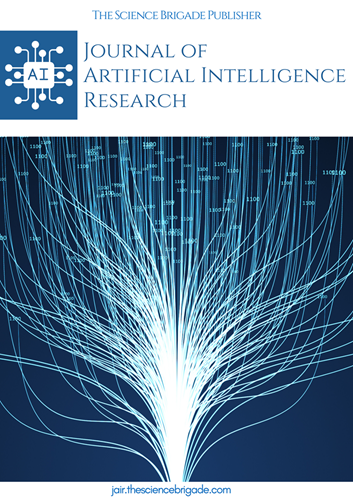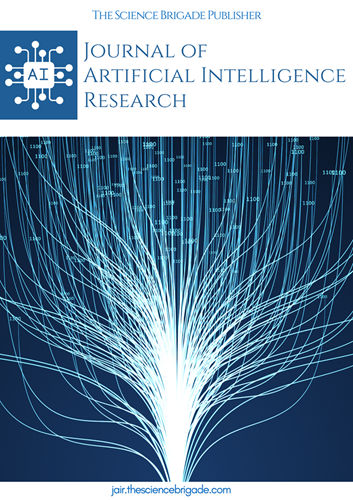Predictive Analytics for Autonomous Database Scaling in AI-Powered Smart Cities
Abstract
Predictive analysis plays a crucial role in optimising autonomous database scaling in AI-powered smart cities, ensuring efficient resource allocation, real-time adaptability, and seamless data processing. The rapid growth of urban data makes it compulsory to use advance machine learning algorithms in statistical models to predict workload fluctuation and prevent computational resources. The objective of this paper is to explore the integration of predictive models which includes time-series forecasting, reinforcement learning, and deep learning-based anomaly detection, which is used to enhance database elasticity, minimize latency, and optimize storage utilization.
References
J. Dean and L. A. Barroso, “The tail at scale,” Communications of the ACM, vol. 56, no. 2, pp. 74–80, Feb. 2013.
M. Stonebraker and U. Çetintemel, “One size fits all: An idea whose time has come and gone,” in Proceedings of the 21st International Conference on Data Engineering (ICDE), Tokyo, Japan, 2005, pp. 2–11.
R. Agrawal, A. E. Abbadi, A. K. Singh, and T. Yurek, “Efficient view maintenance at data warehouses,” in Proceedings of the ACM SIGMOD International Conference on Management of Data, Montreal, Canada, 1997, pp. 417–427.
Y. Bengio, A. Courville, and P. Vincent, “Representation learning: A review and new perspectives,” IEEE Transactions on Pattern Analysis and Machine Intelligence, vol. 35, no. 8, pp. 1798–1828, Aug. 2013.
S. Hochreiter and J. Schmidhuber, “Long short-term memory,” Neural Computation, vol. 9, no. 8, pp. 1735–1780, Nov. 1997.
A. Verma, L. Cherkasova, and R. H. Campbell, “ARIA: Automatic resource inference and allocation for MapReduce environments,” in Proceedings of the ACM International Conference on Autonomic Computing (ICAC), Karlsruhe, Germany, 2011, pp. 235–244.
J. Gama, I. Žliobaitė, A. Bifet, M. Pechenizkiy, and A. Bouchachia, “A survey on concept drift adaptation,” ACM Computing Surveys, vol. 46, no. 4, pp. 1–37, Apr. 2014.
M. Zaharia et al., “Apache Spark: A unified engine for big data processing,” Communications of the ACM, vol. 59, no. 11, pp. 56–65, Nov. 2016.
C. Mutschler, F. Martin, and M. Philippsen, “Predicting workloads in cloud data centers using general-purpose LSTMs,” in Proceedings of the IEEE International Conference on Big Data (Big Data), Boston, MA, USA, 2017, pp. 1690–1699.
Y. LeCun, Y. Bengio, and G. Hinton, “Deep learning,” Nature, vol. 521, no. 7553, pp. 436–444, May 2015.
P. Koutris and D. Suciu, “What do we learn from benchmarking query engines?,” in Proceedings of the VLDB Endowment, vol. 9, no. 3, pp. 180–191, 2015.
J. Shi, X. Qian, and H. Zhang, “A survey of smart city data platforms: Architectures, applications, and future research directions,” IEEE Internet of Things Journal, vol. 9, no. 5, pp. 3501–3517, Mar. 2022.
F. Chollet, “On the measure of intelligence,” arXiv preprint arXiv:1911.01547, 2019.
L. Wang, S. U. Khan, and J. Dayal, “Thermal aware workload placement with task-temperature profiles in a data center,” The Journal of Supercomputing, vol. 61, no. 3, pp. 780–803, Sep. 2012.
T. Mikolov, K. Chen, G. Corrado, and J. Dean, “Efficient estimation of word representations in vector space,” arXiv preprint arXiv:1301.3781, 2013.
G. Premsankar, M. Di Francesco, and T. Taleb, “Edge computing for the Internet of Things: A case study,” IEEE Internet of Things Journal, vol. 5, no. 2, pp. 1275–1284, Apr. 2018.
N. P. Jouppi et al., “In-datacenter performance analysis of a tensor processing unit,” in Proceedings of the 44th Annual International Symposium on Computer Architecture (ISCA), Toronto, Canada, 2017, pp. 1–12.
V. Mnih et al., “Human-level control through deep reinforcement learning,” Nature, vol. 518, no. 7540, pp. 529–533, Feb. 2015.
A. Abadi et al., “TensorFlow: A system for large-scale machine learning,” in Proceedings of the 12th USENIX Symposium on Operating Systems Design and Implementation (OSDI), Savannah, GA, USA, 2016, pp. 265–283.
D. Crankshaw et al., “Clipper: A low-latency online prediction serving system,” in Proceedings of the 14th USENIX Symposium on Networked Systems Design and Implementation (NSDI), Boston, MA, USA, 2017, pp. 613–627.
Downloads
Published
How to Cite
Issue
Section
License

This work is licensed under a Creative Commons Attribution-NonCommercial-ShareAlike 4.0 International License.
License Terms
Ownership and Licensing:
Authors of this research paper submitted to the journal owned and operated by The Science Brigade Group retain the copyright of their work while granting the journal certain rights. Authors maintain ownership of the copyright and have granted the journal a right of first publication. Simultaneously, authors agreed to license their research papers under the Creative Commons Attribution-NonCommercial-ShareAlike 4.0 International (CC BY-NC-SA 4.0) License.
License Permissions:
Under the CC BY-NC-SA 4.0 License, others are permitted to share and adapt the work, as long as proper attribution is given to the authors and acknowledgement is made of the initial publication in the Journal. This license allows for the broad dissemination and utilization of research papers.
Additional Distribution Arrangements:
Authors are free to enter into separate contractual arrangements for the non-exclusive distribution of the journal's published version of the work. This may include posting the work to institutional repositories, publishing it in journals or books, or other forms of dissemination. In such cases, authors are requested to acknowledge the initial publication of the work in this Journal.
Online Posting:
Authors are encouraged to share their work online, including in institutional repositories, disciplinary repositories, or on their personal websites. This permission applies both prior to and during the submission process to the Journal. Online sharing enhances the visibility and accessibility of the research papers.
Responsibility and Liability:
Authors are responsible for ensuring that their research papers do not infringe upon the copyright, privacy, or other rights of any third party. The Science Brigade Publishers disclaim any liability or responsibility for any copyright infringement or violation of third-party rights in the research papers.




